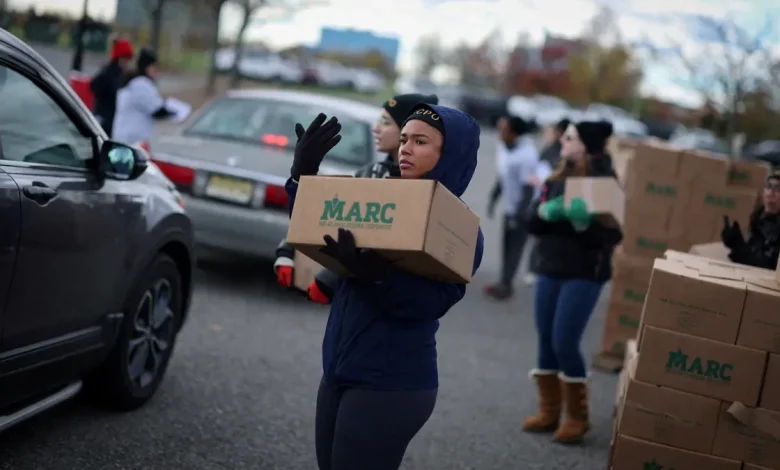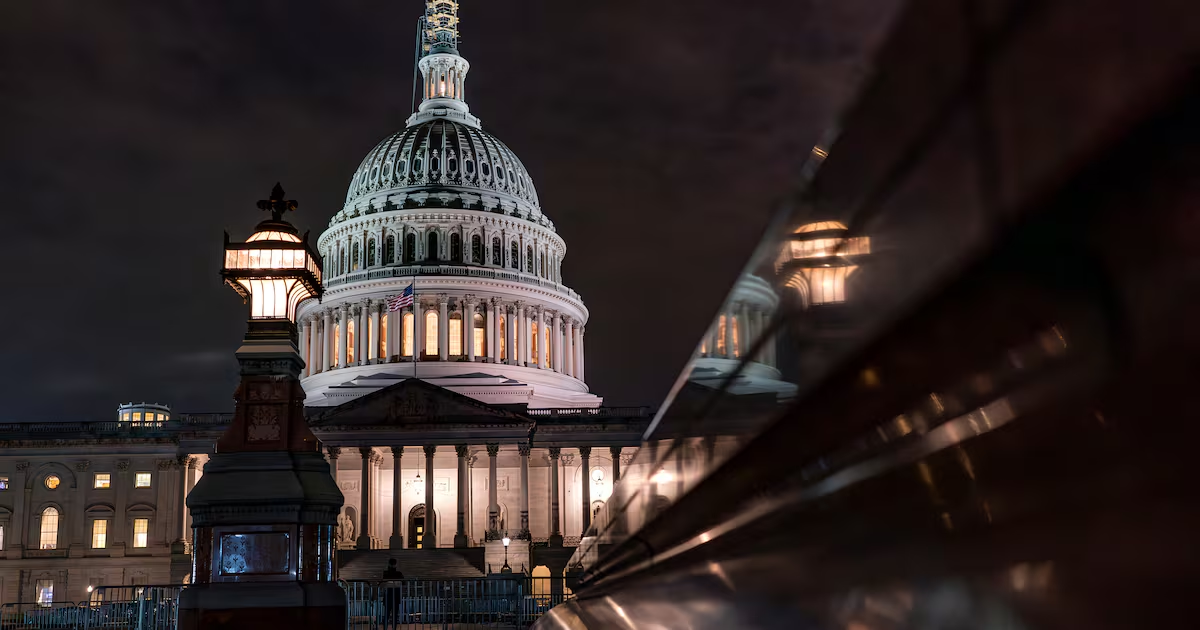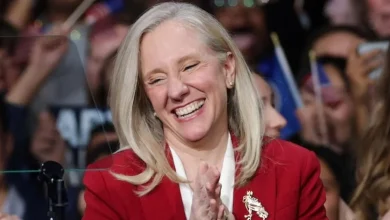Americans are returning dogs to shelters, skipping snacks amid epic shutdown

Here are snapshots of what happened around the country at what could be the beginning of the end of the unprecedented stalemate.
They scrambled to feed their families. They returned adopted pets to shelters. They wrangled to adjust plans after canceled flights.
Americans have endured the longest government shutdown in history, although the end is now in sight since the Senate passed legislation on Nov. 10 to end it. The impasse broke after eight senators who vote with the Democrats joined Republicans without a guaranteed extension of health care subsidies that the Democrats had been demanding for months.
The spending legislation is expected to pass in the House of Representatives on Nov. 12 and President Donald Trump has signaled his willingness to sign it into law.
But for weeks, hundreds of thousands of federal workers were furloughed and employees considered essential to public safety were forced to work without pay.
Linda Lowell, a Democrat from the town of Weems in rural Virginia, called the compromise vote by Democrats, including her state’s senator, Tim Kaine, to end the shutdown a “drop in the ocean of disappointment.
“Too many people are suffering,” Lowell told USA TODAY. “The point has been made that it’s the Republicans who did it, and now I think the Republicans are just going to have to wear the loss of the ACA (Affordable Care Act) credits and the fiasco over SNAP (Supplemental Nutrition Assistance Program).”
Here are snapshots of what happened around the country at what could be the beginning of the end of the unprecedented stalemate:
Creative meals, no snacks, strategic trips to food banks
Thomas McGee works full time as a fast-food restaurant manager in Rockford, Illinois, but still needs the nearly $200 in government food benefits he gets each month to keep enough food on the table for his two sons.
When the government failed to provide SNAP for November, McGee, 53, faced a tough decision.
Should he try to get to work on time or wait in line at the Salvation Army Food Pantry to pick up a bag of donated goods?
McGee chose food for his kids.
“I work a job and still get SNAP,” McGee said. “That’s just how the economy is. And without that SNAP, it’s like I have to either go to work or go to a pantry. One or the other. Because there’s no food in the house. … I have two children. I pay my taxes. I work. I don’t understand why my dollars are not being stretched further.”
Just before the Senate voted to end the shutdown, the Trump administration signaled it would provide partial food assistance benefits after two federal court judges ordered that $4.6 billion in contingency funding be used to continue the program. SNAP benefits cost about $8 billion to $9 billion per month. On Nov. 7, one of the judges ordered the administration to provide full benefits. The Supreme Court has stayed that order while the administration appeals.
That’s enough for roughly half the normal amount of benefits for a month, government officials have said. But those payments could be delayed for weeks.
Without SNAP benefits, Amandah Treaster, of Tulsa, Oklahoma, chose to forego refilling some prescriptions to put food on her family’s table.
“It has been a lot of juggling, being very creative with meals, no snacks, only eating the designated meals, going to stand in the line at the food banks,” said Treaster, who is one of the almost 700,000 Oklahomans on SNAP.
Now that the federal government is moving toward reopening, the question looms about how long it will take for Oklahomans to receive benefits.
There has not been any timeline for when food assistance will resume for Americans.
Even before the shutdown, Treaster began keeping a planner to mark down when she could go to certain food banks. Now, it’s even more work. So many people need food that Treaster has to call to see if the food bank still has food on the days she plans to go.
“Overall, I see it tearing apart families because of the stress,” Treaster said.
She said her family is constantly worrying about what food is in the cabinets, when they can go grocery shopping, and when they’ll be able to pay back relatives for money they’ve borrowed. She has two children, who are 24 and 19. The 19-year-old still lives at home.
“Nobody’s really happy when they’re hungry,” Treaster said.
At animal shelters, a spike in abandoned pets
Before the shutdown, animal shelters and rescues across the country were already facing a crisis. Robyn Urman, founder of Pet ResQ Inc. in Tenafly, New Jersey, who has been rescuing and working with animals since 1982, said this has been the hardest year yet.
“If you can’t feed your kid, you’re giving up your dog, your cat, your guinea pigs or whatever it is, and people are just unaware of it,” Urman. “Our pantry is empty, it’s not getting better, and people are not aware of the trickle-down effect.”
Olivia Gonzalez, social media manager at the Associated Humane Societies Newark Shelter in New Jersey, echoed Urman’s concerns, adding that even before the shutdown, the intake numbers were the highest they’ve ever been.
At AHS Newark, Gonzalez said, an owner surrender waiting list runs “well into” March 2026. On the list are more than 80 dogs and between 80 and 100 cats.
Over the last several days, the shelter has been filled to capacity, and its employees have seen an increase in abandoned animals. Gonzalez said AHS Newark can realistically house about 125 to 130 dogs and about 150 cats or kittens.
“Our shelter is trying to help the most that we can by providing families with food when they ask. But it is a frightening moment, and we are filling up,” Gonzalez said. “We are taking the government shutdown very seriously. We’re trying to provide help and hope to those who need it, but at the end of the day, there are only so many kennels in the shelter.”
Restaurants offer free meals to furloughed workers
Yassin’s Falafel House, in Knoxville, Tennessee, was offering one free meal a day to federal workers who showed their ID for as long as the government shutdown lasts. Owner Yassin Terou did the same thing during the 35-day shutdown in 2019.
“People have to pay their rent,” he said.
Days turned into weeks during the last shutdown, Terou recalled, and customers counted on free meals to feed themselves and their families.
More than 5,600 federal employees work in the Knoxville metropolitan area, according to the most recent data available from the Federal Reserve Bank of St. Louis.
Ruby Sunshine, a national chain with a downtown restaurant on Market Square, is offering a complimentary entrée (up to $20) Monday through Friday to furloughed federal workers who show a valid government-issued employee ID, according to a news release.
“Federal employees are facing an uncertain time, and providing a meal is one small way we can support them,” Elizabeth McGee, CEO of Ruby Sunshine, said in the release. “Delicious food has always been central to bringing people together, and we hope this gesture offers a moment of comfort for those affected.”
Less work, fewer flights, more snags for travel industry
Natalie Paris showed up at Fort Lauderdale-Hollywood International Airport in Florida on Nov. 10 not as a flight attendant but as a traveler, facing the same kind of disruptions she’s spent weeks managing from the other side of the counter.
Her 7 a.m. flight to Philadelphia was canceled, one of dozens grounded as the nation’s air travel system continued to feel the strain of the 41-day federal government shutdown. Paris, who flies for American Airlines, said she’s watched her own schedule shrink as the shutdown has dragged on.
“We get emails and stuff, and they’ve kind of been tracking what’s happening, and then they’ve just had to go back and read just how much we fly,” Paris said. “They’ve been canceling ahead of time. So it just kind of means less hours and stuff for us.”
Flight disruptions across the United States were expected to increase through the week, even as the Senate passed a funding package to end the record-breaking government shutdown.
On the morning of Nov. 11, more than 1,100 flights within, to, or out of the United States had been canceled for the day, according to the data tracker FlightAware. There were more than 1,300 delays as of 11 a.m. ET.
Thousands of flights have been cut since Transportation Secretary Sean Duffy ordered the cancellations to begin Nov. 7. By Nov. 10, the travel woes were compounded by a Chicago-area winter storm that grounded even more flights.
The percentage of flights required to be cut by the Federal Aviation Administration was originally expected to increase to 6% from 4% at 40 major airports on Nov. 11, the first bump on the ramp-up to a full 10% of cuts by Nov. 14. It’s unclear whether or when a newly passed Senate funding package to reopen the federal government – and end weeks of payless work for air traffic controllers – will have an impact on the planned cancellations.
The shutdown may soon be over, but confusion, stress and uncertainty abound for many Americans feeling insecure about food as the Thanksgiving holiday approaches.
Swapna Venugopal Ramaswamy and Jeanine Santucci report for USA TODAY. Amanda Wallace reports for The Record and NorthJersey.com. Jeff Kolkey reports for the Rockford Register Star. Joanna Hayes reports for the Knoxville News Sentinel. Alex Gladden reports for The Oklahoman and Jasmine Fernandez reports for the Palm Beach Post.
Swapna Venugopal Ramaswamy is a White House correspondent for USA TODAY. You can follow her on X @SwapnaVenugopal





